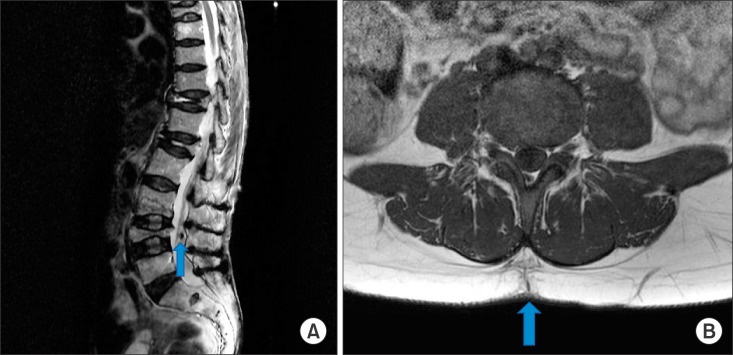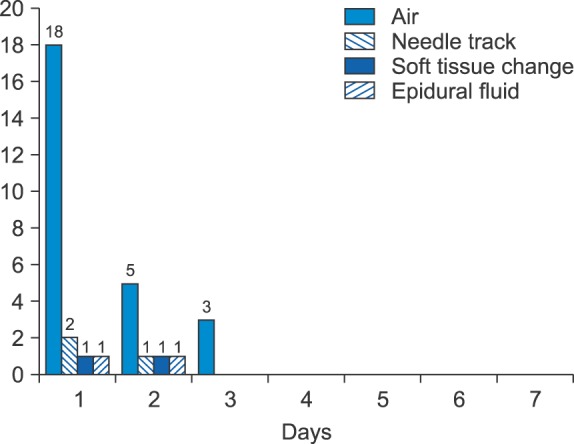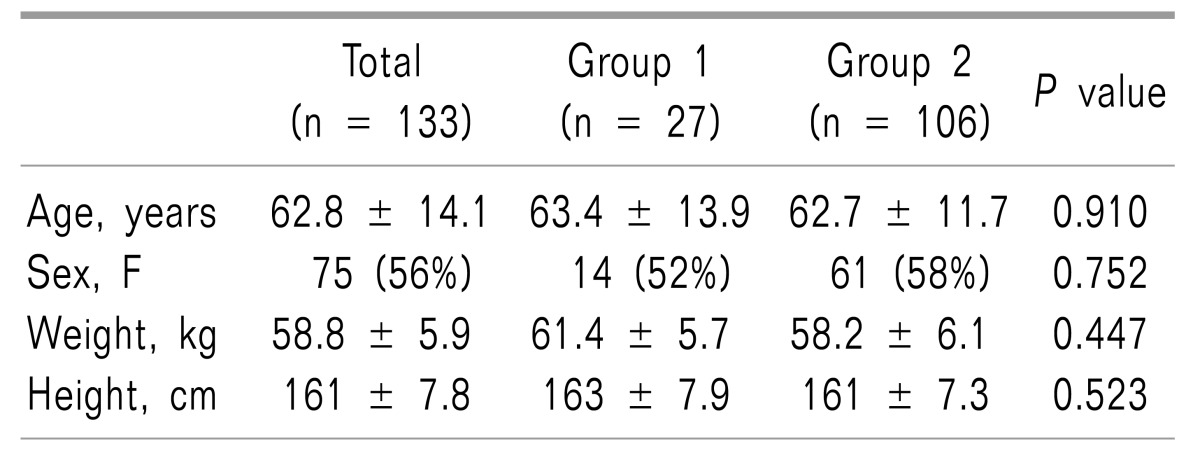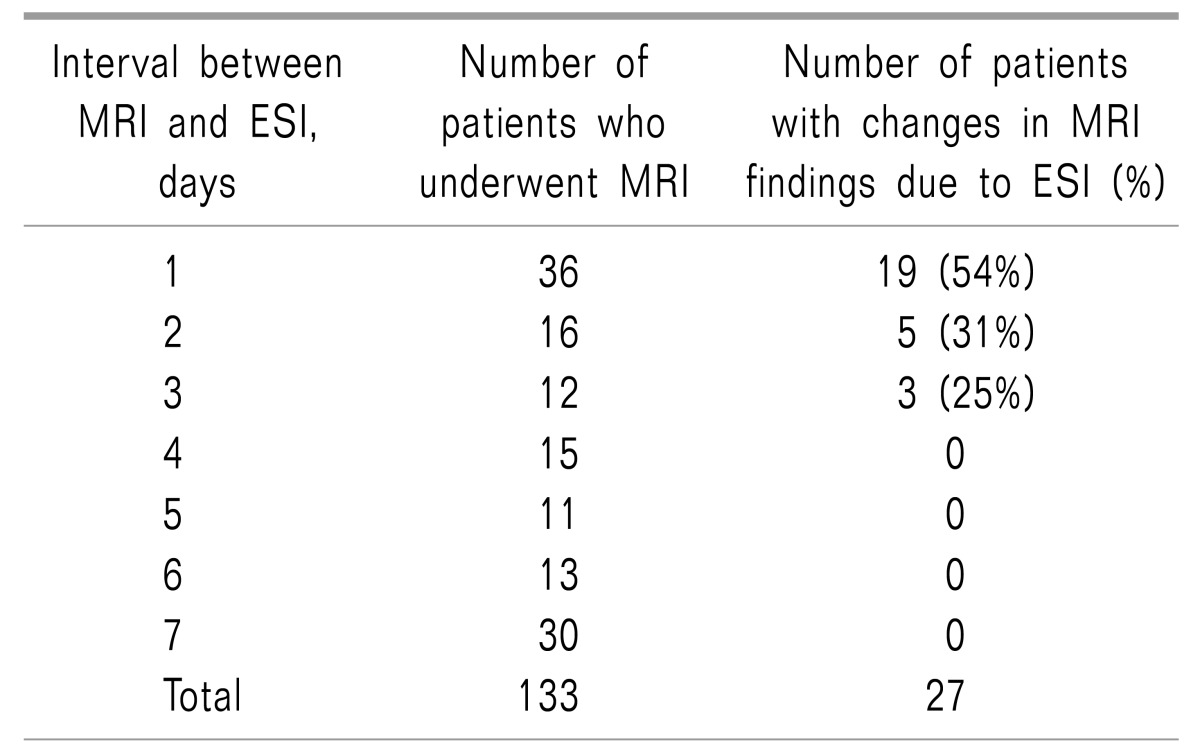1. Kwon WK, Kim AN, Lee PM, Park CH, Kim JH. Needle tip position and bevel direction have no effect in the fluoroscopic epidural spreading pattern in caudal epidural injections: a randomized trial. Pain Res Manag. 2016; 2016:4158291. PMID:
27445609.

2. Manchikanti L, Staats PS, Nampiaparampil DE, Hirsch JA. What is the role of epidural injections in the treatment of lumbar discogenic pain: a systematic review of comparative analysis with fusion. Korean J Pain. 2015; 28:75–87. PMID:
25852828.

3. Manchikanti L, Singh V, Pampati V, Falco FJ, Hirsch JA. Comparison of the efficacy of caudal, interlaminar, and transforaminal epidural injections in managing lumbar disc herniation: is one method superior to the other. Korean J Pain. 2015; 28:11–21. PMID:
25589942.

4. Lee JY, Lee SM, Sim WS, Ahn HJ, Park MH, Lim HY, et al. False loss of resistance in cervical epidural injection: the loss of resistance technique compared with the epidrum guidance in locating epidural space. Pain Physician. 2016; 19:131–138. PMID:
27008286.
5. Gracia J, Gomar C, Riambau V, Cardenal C. Radicular acute pain after epidural anaesthesia with the technique of loss of resistance with normal saline solution. Anaesthesia. 1999; 54:168–171. PMID:
10215712.

6. Alsaleh K, Ho D, Rosas-Arellano MP, Stewart TC, Gurr KR, Bailey CS. Radiographic assessment of degenerative lumbar spinal stenosis: is MRI superior to CT. Eur Spine J. 2017; 26:362–367. PMID:
27663702.

7. Kim TS, Shin SS, Kim JR, Kim DY. Air bubbles mimic disc herniation in MRI after cervical epidural block. Korean J Pain. 2010; 23:202–206. PMID:
20830267.

8. Ammirati M, Perino F. Symptomatic air trapped in the spine after lumbar epidural corticosteroid injection. Case report. J Neurosurg Spine. 2006; 5:359–361. PMID:
17048774.

9. Davidson EM, Sklar EM, Ginosar Y, Abdi S, Bhatia RG, Garcia L, et al. Evaluation of magnetic resonance imaging following neuraxial steroid administration: does epidural injection produce pathologic findings. Reg Anesth Pain Med. 2008; 33:326–331. PMID:
18675743.

10. von Rothenburg T, Drescher R, Koester O, Schmid G. Magnetic resonance imaging of the lumbar spine after epidural and nerve root injection therapy: evaluation of soft tissue changes. Clin Imaging. 2006; 30:331–334. PMID:
16919554.

11. Davidson EM, Sklar E, Bhatia R, Garcia L, Arheart KL, Ginosar Y, et al. Magnetic resonance imaging findings after uneventful continuous infusion neuraxial analgesia: a prospective study to determine whether epidural infusion produces pathologic magnetic resonance imaging findings. Anesth Analg. 2010; 110:233–237. PMID:
19520756.

12. Choi JH, Hong JY, Suh SW, Yang JH, Park SY, Park JH, et al. What is the role of epidural steroid injections in lumbar spinal disease with moderate disability? Pain Physician. 2016; 19:293–298. PMID:
27228516.
13. Tomkins-Lane CC, Conway J, Hepler C, Haig AJ. Changes in objectively measured physical activity (performance) after epidural steroid injection for lumbar spinal stenosis. Arch Phys Med Rehabil. 2012; 93:2008–2014. PMID:
22659537.

14. Cameron CM, Scott DA, McDonald WM, Davies MJ. A review of neuraxial epidural morbidity: experience of more than 8,000 cases at a single teaching hospital. Anesthesiology. 2007; 106:997–1002. PMID:
17457132.
15. Choi JW, Lim HW, Lee JY, Lee WI, Lee EK, Chang CH, et al. Effect of cervical interlaminar epidural steroid injection: analysis according to the neck pain patterns and MRI findings. Korean J Pain. 2016; 29:96–102. PMID:
27103964.

16. DeFroda SF, DePasse JM, Eltorai AE, Daniels AH, Palumbo MA. Evaluation and management of spinal epidural abscess. J Hosp Med. 2016; 11:130–135. PMID:
26540492.

17. Patel AR, Alton TB, Bransford RJ, Lee MJ, Bellabarba CB, Chapman JR. Spinal epidural abscesses: risk factors, medical versus surgical management, a retrospective review of 128 cases. Spine J. 2014; 14:326–330. PMID:
24231778.

18. Ikushima I, Hirai T, Korogi Y, Norio M, Koganemaru M, Suga R, et al. Spinal MR findings in continuous epidural analgesia without infection. AJNR Am J Neuroradiol. 2005; 26:991–995. PMID:
15891149.
19. Stevens R, Mikat-Stevens M, Van Clief M, Schubert A, Weinstein Z. Deliberate epidural air injection in dogs: a radiographic study. Reg Anesth. 1989; 14:180–182. PMID:
2491280.
20. Maes R, Morrison WB, Parker L, Schweitzer ME, Carrino JA. Lumbar interspinous bursitis (Baastrup disease) in a symptomatic population: prevalence on magnetic resonance imaging. Spine (Phila Pa 1976). 2008; 33:E211–E215. PMID:
18379391.
21. Filippiadis DK, Mazioti A, Argentos S, Anselmetti G, Papakonstantinou O, Kelekis N, et al. Baastrup's disease (kissing spines syndrome): a pictorial review. Insights Imaging. 2015; 6:123–128. PMID:
25582088.









 PDF
PDF Citation
Citation Print
Print




 XML Download
XML Download